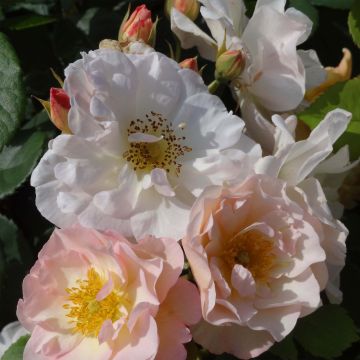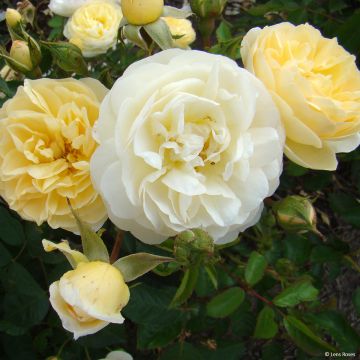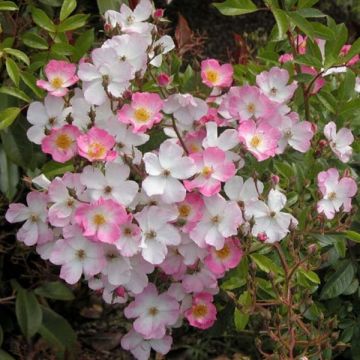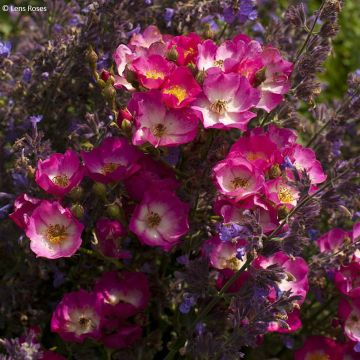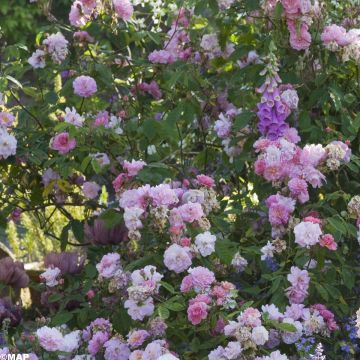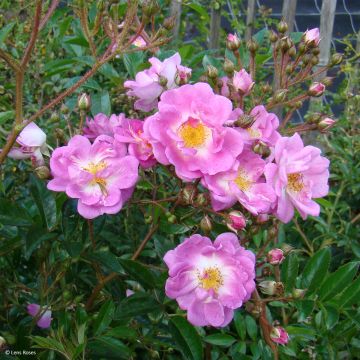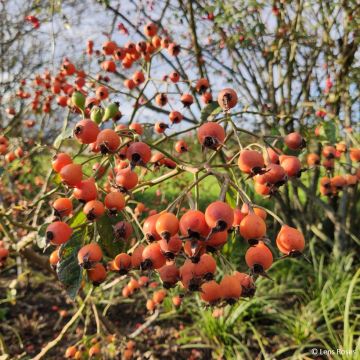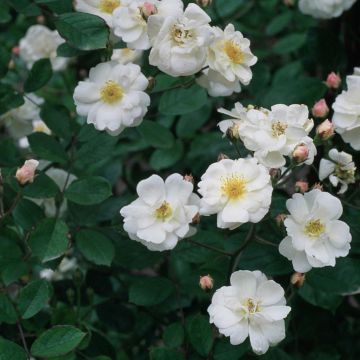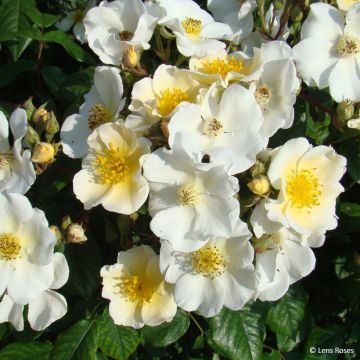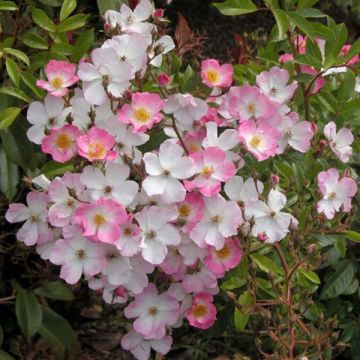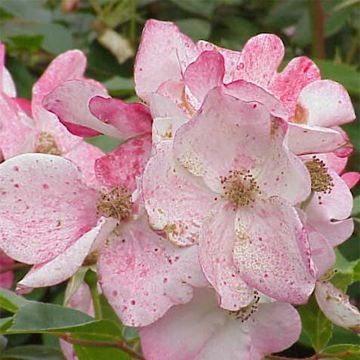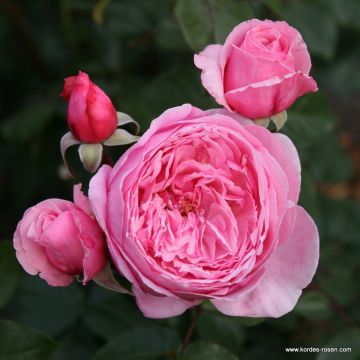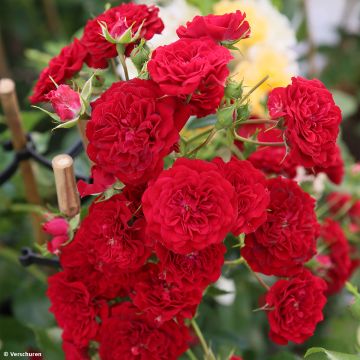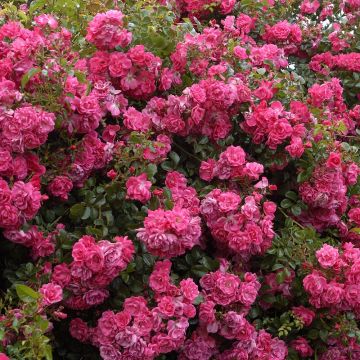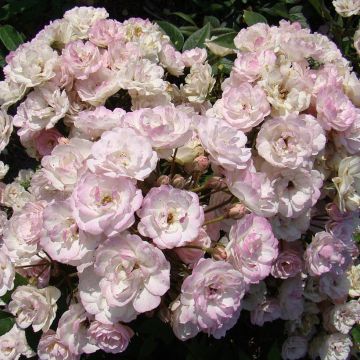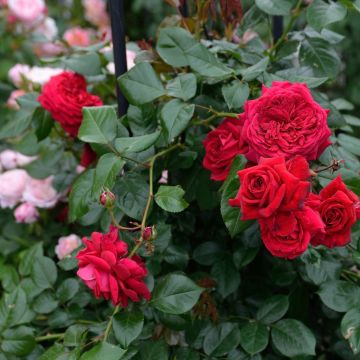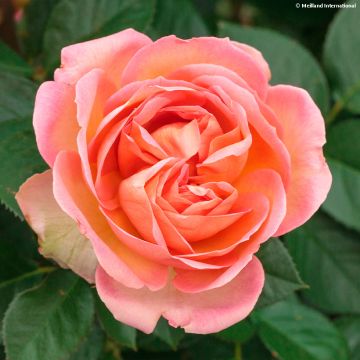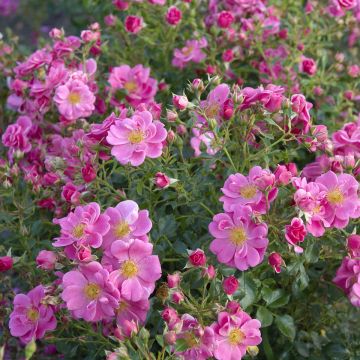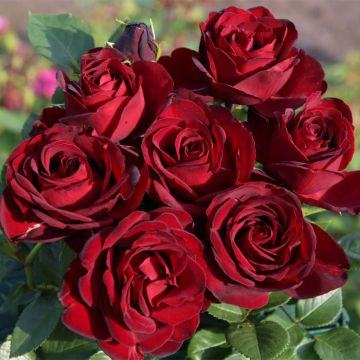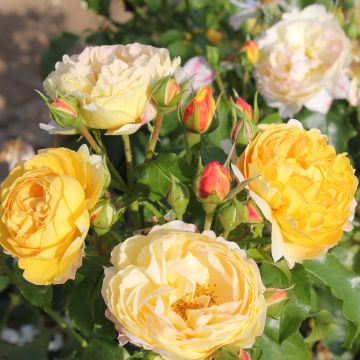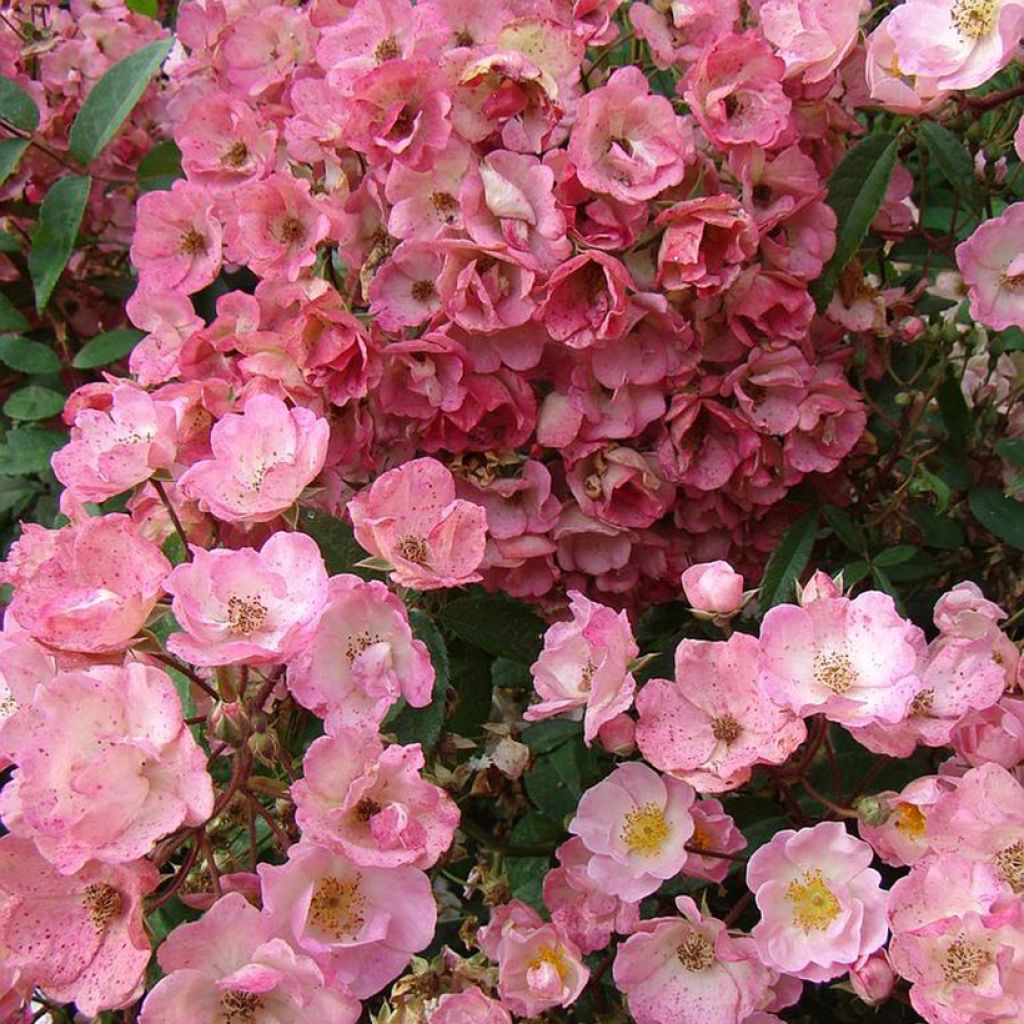

Rosier arbustif Alden Biesen
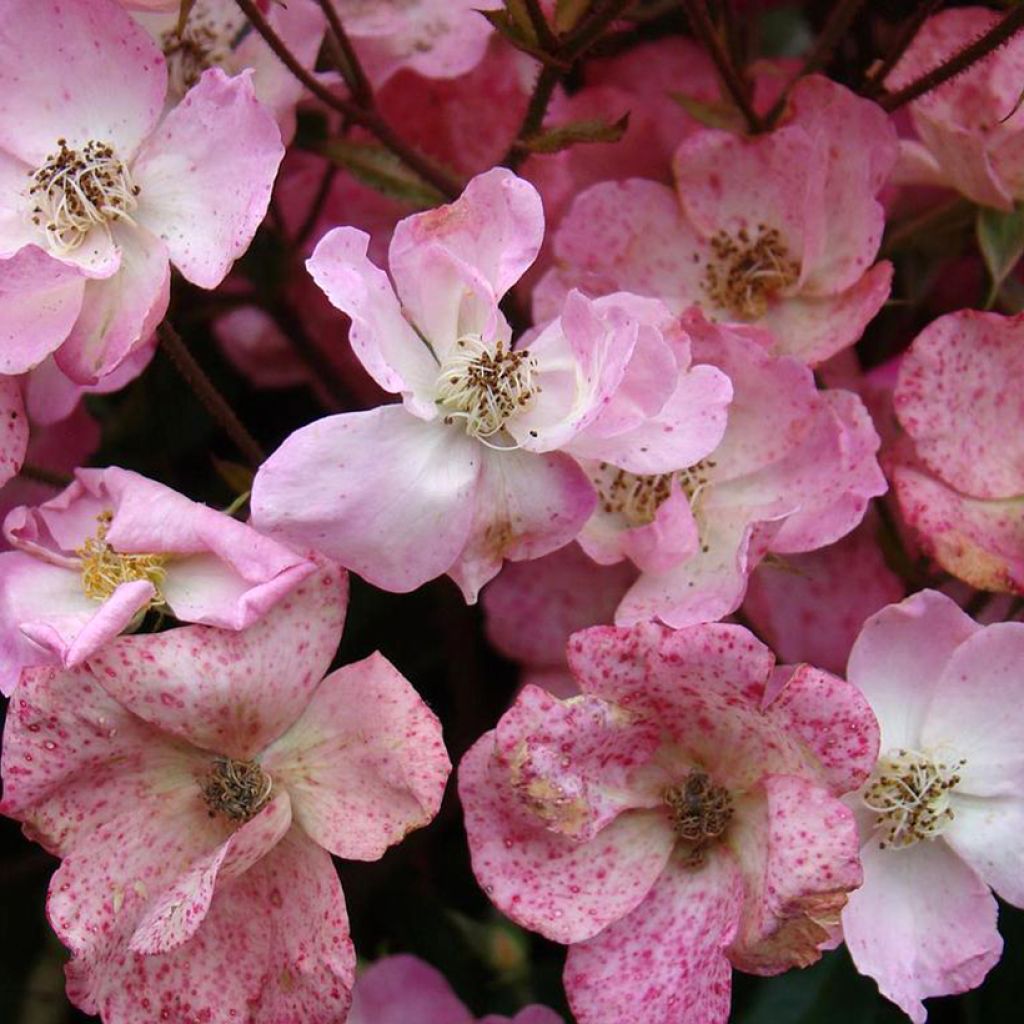

Rosier arbustif Alden Biesen
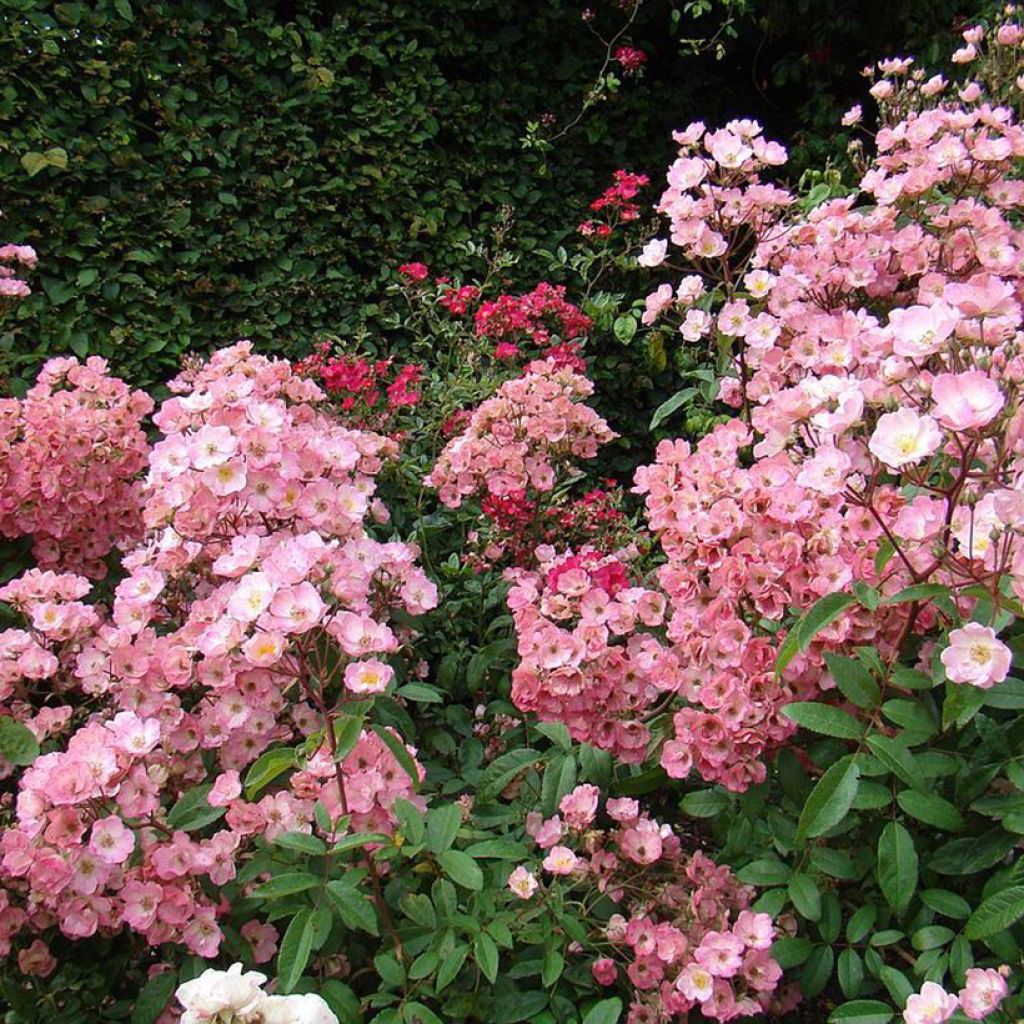

Rosier arbustif Alden Biesen
Rosa x moschata Alden Biesen
Rosa x moschata Alden Biesen
This item cannot be shipped to the selected country
Delivery charge from €5.90
Delivery charge from €5.90
More information
Schedule delivery date,
and select date in basket
This plant carries a 24 months recovery warranty
More information
We guarantee the quality of our plants for a full growing cycle, and will replace at our expense any plant that fails to recover under normal climatic and planting conditions.
From €5.90 for pickup delivery and €6.90 for home delivery
Express home delivery from €8.90.
From €5.90 for pickup delivery and €6.90 for home delivery
Express home delivery from €8.90.
Does this plant fit my garden?
Set up your Plantfit profile →
Description
Rosa Alden Biesen is a large and beautiful bush with a spectacular repeat-flowering from late spring until October. Its small wild rose flowers group together in large pyramidal clusters ranging from pink to green, somewhat reminiscent of paniculate hydrangeas. Small fruits appear after the flowers, but this doesn't prevent the plant from continuing to bloom throughout the entire season. This dazzling rose has a beautiful stature. It is disease-resistant, low-maintenance, and has a natural habit. It works wonders in a large flowering hedge or at the back of a border.
Rosa Alden Biesen is a creation of L. Lens, dating back to 1996. It comes from, among others, the musk rose (R. moschata), a spontaneous hybrid probably originating from Asia Minor or the Middle East. Similar to polyanthas and floribundas, roses in this family produce flowers gathered in clusters, but their colours are more refined and they have a more flexible and graceful habit. Alden Biesen has a rapid and vigorous growth rate, with a slightly spreading upright habit. Ultimately, this bush can reach about 2m (7ft) in height and 1.5m (5ft) in width, depending on growing conditions. Its development will be slightly greater in mild climates than in colder regions. Its flexible and thorny stems bear glossy dark green leaves divided into small elongated leaflets. The foliage is generally free from diseases. Flowering begins in June and continues almost uninterrupted until the first frost, as long as the soil does not dry out too much in summer. It takes the form of long, large clusters composed of numerous small single flowers measuring 3 to 4cm (1 to 2in) in diameter, which remain beautiful at all stages. Each flower displays the full colour range of roses, from candy pink to darker pink, before fading to a lovely chartreuse green hue. The centre of the corollas is yellow-green, inviting bees and other pollinators. After pollination, oval-shaped fruits called hips form, turning orange-red from the end of summer. The hardiness of this rose is evaluated at -15°C (5°F).
The hybrid musk rose Alden Biesen has been recognised in international competitions. It received the Certificate of Merit in Genoa in 1997, in Geneva in 1998, and in Courtrai in 1995.
Alden Biesen thrives in well-prepared soil and does not require pruning except for the removal of dead wood. Plant it in a flowering hedge with other botanical or old roses ('Cornelia', 'Felicia', Bouquet Parfait, Rosa complicata), modest-sized lilacs (Syringa microphylla 'Superba'), mock oranges, or Japanese quinces. Also consider pairing it with a viticella clematis, which is an equally easy-to-grow plant.
Report an error about the product description
Plant habit
Flowering
Foliage
Botanical data
Rosa
x moschata
Alden Biesen
Rosaceae
Cultivar or hybrid
Other Moschata Roses
Planting and care
Plant in a sunny or lightly shaded location. Bed roses are tolerant, but do not appreciate excessive limestone or acidity. They will adapt to any garden as long as the soil is well worked, not too heavy, and sufficiently rich. To plant your rose, work the soil by crumbling it and add fertiliser to the bottom of the planting hole (dried blood or dehydrated horn, for example). Water generously after planting to remove any air pockets. Water regularly for a few weeks to facilitate rooting.
Pruning is limited to removing dead wood. If necessary, you can thin out the centre of the bush by pruning intersecting branches. As the flowers bloom, remove faded flowers to encourage the development of other buds.
Roses are often stained or unsightly at the end of summer, but this will not hinder their development. These spots are a natural phenomenon and will not harm the rose.
Planting period
Intended location
Care
-
, onOrder confirmed
Reply from on Promesse de fleurs
Roses by producer
Haven't found what you were looking for?
Hardiness is the lowest winter temperature a plant can endure without suffering serious damage or even dying. However, hardiness is affected by location (a sheltered area, such as a patio), protection (winter cover) and soil type (hardiness is improved by well-drained soil).

Photo Sharing Terms & Conditions
In order to encourage gardeners to interact and share their experiences, Promesse de fleurs offers various media enabling content to be uploaded onto its Site - in particular via the ‘Photo sharing’ module.
The User agrees to refrain from:
- Posting any content that is illegal, prejudicial, insulting, racist, inciteful to hatred, revisionist, contrary to public decency, that infringes on privacy or on the privacy rights of third parties, in particular the publicity rights of persons and goods, intellectual property rights, or the right to privacy.
- Submitting content on behalf of a third party;
- Impersonate the identity of a third party and/or publish any personal information about a third party;
In general, the User undertakes to refrain from any unethical behaviour.
All Content (in particular text, comments, files, images, photos, videos, creative works, etc.), which may be subject to property or intellectual property rights, image or other private rights, shall remain the property of the User, subject to the limited rights granted by the terms of the licence granted by Promesse de fleurs as stated below. Users are at liberty to publish or not to publish such Content on the Site, notably via the ‘Photo Sharing’ facility, and accept that this Content shall be made public and freely accessible, notably on the Internet.
Users further acknowledge, undertake to have ,and guarantee that they hold all necessary rights and permissions to publish such material on the Site, in particular with regard to the legislation in force pertaining to any privacy, property, intellectual property, image, or contractual rights, or rights of any other nature. By publishing such Content on the Site, Users acknowledge accepting full liability as publishers of the Content within the meaning of the law, and grant Promesse de fleurs, free of charge, an inclusive, worldwide licence for the said Content for the entire duration of its publication, including all reproduction, representation, up/downloading, displaying, performing, transmission, and storage rights.
Users also grant permission for their name to be linked to the Content and accept that this link may not always be made available.
By engaging in posting material, Users consent to their Content becoming automatically accessible on the Internet, in particular on other sites and/or blogs and/or web pages of the Promesse de fleurs site, including in particular social pages and the Promesse de fleurs catalogue.
Users may secure the removal of entrusted content free of charge by issuing a simple request via our contact form.
The flowering period indicated on our website applies to countries and regions located in USDA zone 8 (France, the United Kingdom, Ireland, the Netherlands, etc.)
It will vary according to where you live:
- In zones 9 to 10 (Italy, Spain, Greece, etc.), flowering will occur about 2 to 4 weeks earlier.
- In zones 6 to 7 (Germany, Poland, Slovenia, and lower mountainous regions), flowering will be delayed by 2 to 3 weeks.
- In zone 5 (Central Europe, Scandinavia), blooming will be delayed by 3 to 5 weeks.
In temperate climates, pruning of spring-flowering shrubs (forsythia, spireas, etc.) should be done just after flowering.
Pruning of summer-flowering shrubs (Indian Lilac, Perovskia, etc.) can be done in winter or spring.
In cold regions as well as with frost-sensitive plants, avoid pruning too early when severe frosts may still occur.
The planting period indicated on our website applies to countries and regions located in USDA zone 8 (France, United Kingdom, Ireland, Netherlands).
It will vary according to where you live:
- In Mediterranean zones (Marseille, Madrid, Milan, etc.), autumn and winter are the best planting periods.
- In continental zones (Strasbourg, Munich, Vienna, etc.), delay planting by 2 to 3 weeks in spring and bring it forward by 2 to 4 weeks in autumn.
- In mountainous regions (the Alps, Pyrenees, Carpathians, etc.), it is best to plant in late spring (May-June) or late summer (August-September).
The harvesting period indicated on our website applies to countries and regions in USDA zone 8 (France, England, Ireland, the Netherlands).
In colder areas (Scandinavia, Poland, Austria...) fruit and vegetable harvests are likely to be delayed by 3-4 weeks.
In warmer areas (Italy, Spain, Greece, etc.), harvesting will probably take place earlier, depending on weather conditions.
The sowing periods indicated on our website apply to countries and regions within USDA Zone 8 (France, UK, Ireland, Netherlands).
In colder areas (Scandinavia, Poland, Austria...), delay any outdoor sowing by 3-4 weeks, or sow under glass.
In warmer climes (Italy, Spain, Greece, etc.), bring outdoor sowing forward by a few weeks.

































